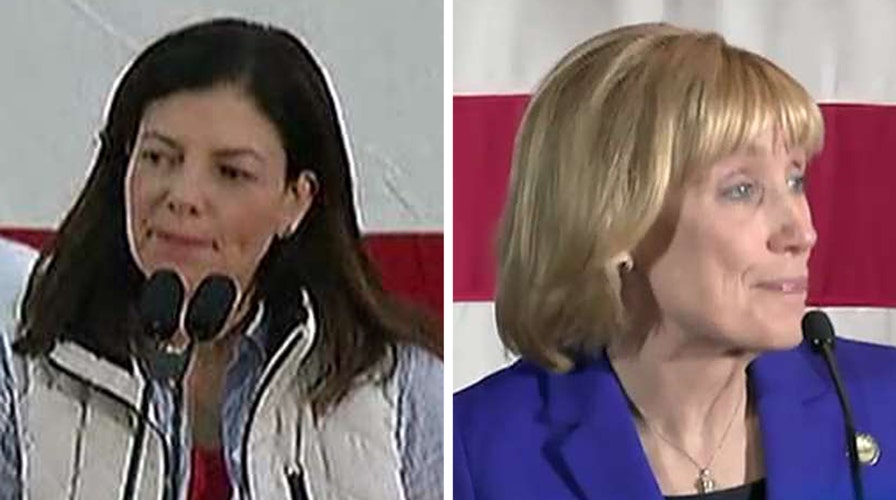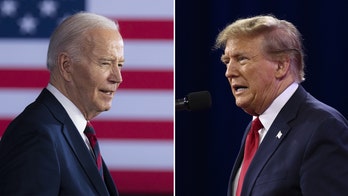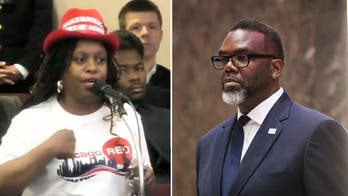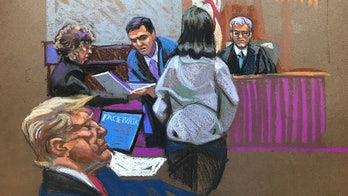Sen. Kelly Ayotte concedes race to Democrat Maggie Hassan
Democrats pick-up another Senate seat, GOP still has majority
And here they come.
The presidential election commanded nearly every cubic centimeter of news oxygen available the past few months. But believe it or not, dozens of new members of Congress -- House and Senate -- are poised to arrive this week in Washington for orientation sessions, vote in internal, party leadership elections and figure out the congressional geography.
And for many congressional neophytes, their first introduction to Washington will come from the much-maligned press corps.
A squadron of scribes will stand outside a Capitol Hill hotel just up from the Library of Congress to greet the new lawmakers-elect. Some members-elect will arrive with a coterie of staff.
Others will take the subway from Reagan National Airport and lug a suitcase on wheels and a duffle bag up the street from the Capitol South Metro stop. The questions from the reporters will flummox those who aren’t used to all of the attention.
Others are more genial and prepared to chat. Some are more than willing to talk. They want to make sure reporters know who they are, where they’re from. Sure, I can go on your morning program at 5:30 a.m. Here’s my card. My cell phone number is on the back. Call or text me any time.
Who are all of these people?
Certainly, there are the “celebrity” newcomers. There’s Sen.-elect Catherine Cortez Masto, D-Nevada. She’s the first Latina senator. Masto too the seat of retiring Senate Minority Leader Harry Reid in a hard-fought battle against GOP Rep. Joe Heck. Then there’s New Hampshire Gov. Maggie Hassan, a Democrat who unseated Sen. Kelly Ayotte, R-N.H., in a tough race, too.
In the House, journalists will focus on Rep.-elect Charlie Crist, D-Fla.
He’s the former Republican Florida governor who tried for Senate, morphed into an independent, and finally transmogrified himself into a Democrat.
Crist defeated GOP Rep. David Jolly in a redrawn congressional district. There’s also Rep.-elect Jimmy Panetta, D-Calif., son of former Congressman and former everything-Washington Leon Panetta.
In Wyoming, Rep.-elect Liz Cheney, a Republican, succeeds retiring GOP Rep. Cynthia Lummis. Cheney’s the daughter of former Vice President Dick Cheney.
Her father represented Wyoming’s at-large congressional district for a decade. He even ascended to the leadership post of GOP Whip before President George H.W. Bush tapped him to become Defense secretary.
Lots of journalists will focus on these folks. They’re easy to pick up. They offer compelling narratives. Make good story lines.
Then there are those few outside of their districts have ever heard of. Try Rep.-elect Salud Carbajal, D-Calif., who succeeds retiring Democratic Rep. Lois Capps. Maybe Rep.-elect Raja Krishnamoorthi, D-Ill., or Rep.-elect Scott Taylor, R-Va.
There are some old but new members this Congress.
Rep.-elect Carol Shea-Porter, D-N.H., emerged victorious in a fourth-consecutive race against incumbent GOP Rep. Frank Guinta.
Guinta unseated Shea-Porter in the 2010 GOP wave. Shea-Porter vanquished Guinta in the 2012 presidential election. Guinta rallied in 2014. And now Shea-Porter is back after the 2016 presidential election.
Rep.-elect Brad Schneider, D-Ill., unseated Rep. Bob Dold, R-Ill., in 2012. Dold came back in 2014. Now Schneider defeated Dold in 2016.
Notice a trend here?
Rep.-elect Colleen Hanabusa, D-Hawaii, also returns to Congress.
She lost the Democratic primary against Sen. Brian Schatz in 2014 and left the House. Rep. Mark Takai, a fellow Democrat, won Hanabusa’s seat in 2014 but died this past summer. Hanabusa will now succeed Takai.
It’s unclear if former lawmakers returning to Congress view attendance at the orientation sessions as the same as repeating a grade in school.
House Republicans will pitch their new members immediately into a candidate forum and Tuesday votes for leadership elections.
Just a few weeks ago, there was chatter about the future of House Speaker Paul Ryan, R-Wis.
The question focused on whether Ryan could win a vote on the House floor in January to return to his leadership post.
Ryan feuded openly with President-elect Trump. Some pro-Trump Republicans argued the Wisconsin Republican wasn’t doing enough to elect the GOP nominee.
But Trump’s victory ironically seems to have now quashed those concerns. Ryan last week even showed Trump around his Capitol Hill office and took him out onto the Speaker’s Balcony of the Capitol, which overlooks the stage now under construction for the late-January inauguration.
Then there’s the office lottery for House members.
That won’t come until early December. Incoming lawmakers always angle for the biggest office possible. “Returning” members like Shea-Porter and Schneider typically skip ahead in the line. New senators work out of cramped quarters in the basement of the Russell and Dirksen Senate Office Buildings for a few months before moving into their “swing” offices.
These are “regular” Senate offices. But not the full office those senators will occupy for the balance of their six-year terms.
Three lawmakers-elect are expected to join the House ahead of some of their colleagues. Not only did they win election to a full, two-year term on Tuesday, but they also won special elections to succeed lawmakers who either died or resigned.
Hanabusa will take Takai’s seat early. The House will also swear-in Kentucky GOP Rep.-elect James Comer -- not James Comey -- to take the place of GOP Rep. Ed Whitfield, who resigned.
The House will also seat Pennsylvania Democratic Rep.-elect Dwight Evans -- not the former Boston Red Sox star -- who won the district represented by former Rep. Chaka Fattah, a fellow Democrat.
Whitfield resigned amid an ethics inquiry. Fattah quit after his conviction on federal corruption charges.
At that point, the House will be at full membership of 435 -- 247 Republicans and 188 Democrats. Of course, the House and Senate may be at less than full membership in January. It’s inevitable that the incoming presidential administration will tap at least a few House or Senate members for Cabinet or other administration posts.
This time of year on Capitol Hill is always a period of change. Expect to hear copy machines on the fifth floor of the Cannon House Office Building running non-stop as junior aides and interns fine-tune resumes. Furniture, file cabinets, broken lamps and wooden desks that look like they were commissioned during the Eisenhower administration will litter the congressional hallways as new members move in and retiring or defeated lawmakers exit.
And those lawmakers who aren’t sticking around?
They’re relegated to the grandiloquently-named “Departing Member Services Center,” in the Rayburn House Office Building. The cramped joint is stocked with a few desks, file cabinets and phones. It’s equipped with just the basics for lawmakers as they finish their final weeks in Congress.





